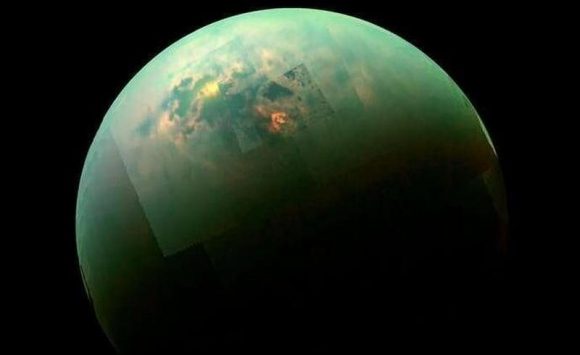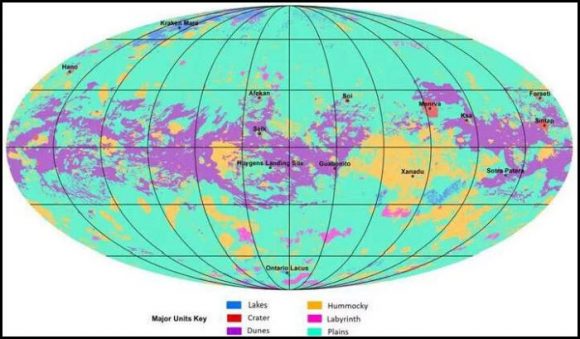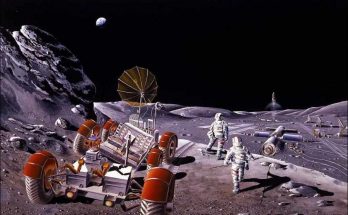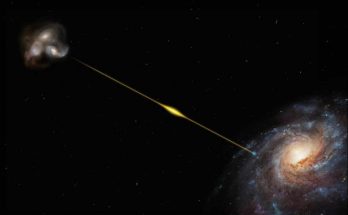A map showing the geological structure of Satan’s largest moon Titan was published. When you look at the map carefully, you witness some important details from sand dunes to lakes and plains.
Scientists can finally look at Saturn’s largest moon Titan in detail. A group of astronomers created the first global map of the Titan, combining more than 100 close passes of the Cassini vehicle and combining both images and radar measurements. This detailed view shows a terrain as diverse as the Earth.
The research team used the data from NASA’s Cassini mission between 2004 and 2017 to create the map. In particular, they used data from Cassini’s radar imager to penetrate Titan’s nitrogen and methane atmosphere. In addition, the team was able to identify the larger geological characteristics of the Titan despite the methane find, using data obtained by Cassini’s infrared devices.
Slightly less than two-thirds of the surface consists of plains, but mostly 17% of the equator area has sand dunes. 14% consists of hills or mountainous terrain, while 1.5% consists of labyrinth-like terrain mostly formed by erosion and rain. However, it is possible to say that the unseen parts are also important. Only 1.5% of the surface of the Titan consists of lakes (methane lake, not water lake), and the absence of craters proves that the surface is relatively young.
Visits: 88




